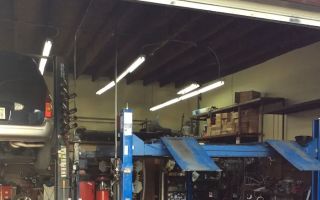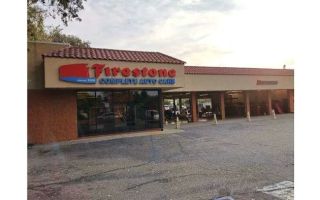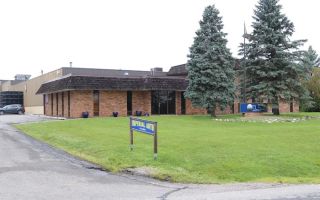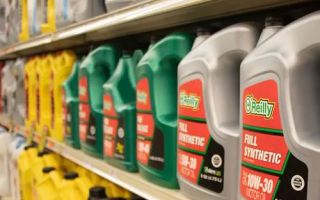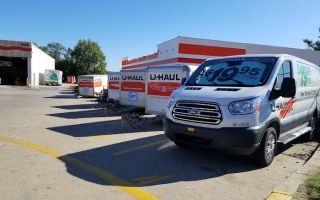What to Do Immediately After a Tire Blowout While Driving
It was a warm summer afternoon when I experienced my first tire blowout on the highway. One moment, I was cruising at a steady pace, and the next, I heard a loud bang followed by the violent shaking of my steering wheel. My heart raced as I struggled to keep the car in control. That terrifying moment taught me the importance of knowing exactly how to handle a tire blowout emergency. If you ever find yourself in a similar situation, here’s what you need to do to stay safe and get back on the road as quickly as possible.

MR. TIRE INC.
2078 New York Ave, Huntington Station, NY 11746, USA
1. Stay Calm and Keep a Firm Grip on the Steering Wheel
The first and most crucial thing to remember during a tire blowout is not to panic. When I lost my tire, my immediate reaction was fear, but I quickly reminded myself to stay focused. A blowout can cause your car to swerve unexpectedly, and if you overcorrect or jerk the steering wheel, you risk losing complete control.
Keep both hands firmly on the steering wheel and maintain a straight path. Avoid any sudden movements that could make the situation worse. Your goal at this moment is to stabilize the car and keep it from veering off the road.

MR. TIRE INC.
2078 New York Ave, Huntington Station, NY 11746, USA
2. Do Not Slam on the Brakes
The instinctual reaction when something goes wrong while driving is to hit the brakes, but in a tire blowout situation, this is the worst thing you can do. When I experienced my first blowout, I nearly pressed the brake out of reflex, but I quickly remembered that braking suddenly could cause the car to skid or even flip.
Instead, let your car slow down naturally. Take your foot off the accelerator and allow the vehicle to gradually lose speed. If you need to use the brakes, apply them very gently once the car is under better control.
3. Steer to a Safe Location
Once the car has stabilized and is slowing down, start guiding it towards a safe spot. Ideally, you should move to the right shoulder of the road or a designated emergency lane. If you're on a highway, try to pull over as far as possible to avoid oncoming traffic.
When my blowout happened, I turned on my hazard lights immediately so that other drivers were aware of my situation. Doing this is crucial, especially if you're on a busy road, to prevent further accidents.
4. Turn on Hazard Lights and Assess the Damage
Once you're safely off the road, switch on your hazard lights to alert other drivers that you're experiencing a problem. This will keep you visible and reduce the risk of another vehicle colliding with you.
After my blowout, I stepped out cautiously and checked the extent of the damage. The tire was completely shredded, and pieces of rubber were scattered behind my car. If you're dealing with a minor puncture, you might be able to fix it yourself, but if the tire is completely destroyed, you’ll need a spare or professional assistance.
5. Replace the Blown Tire or Call for Help
If you have a spare tire and know how to change it, now is the time to do so. I always carry a basic tire replacement kit in my trunk, including a jack, a lug wrench, and a fully inflated spare tire. If you’re comfortable changing it yourself, follow these steps:
- Make sure the car is parked on a flat surface and engage the parking brake.
- Use wheel wedges to prevent the car from rolling.
- Loosen the lug nuts slightly before jacking up the car.
- Raise the vehicle with the jack and fully remove the damaged tire.
- Mount the spare tire, tighten the lug nuts in a star pattern, and lower the car.
However, if you're on a busy road or don't feel confident changing the tire, it’s best to call for professional roadside assistance. I learned this the hard way when my second blowout happened at night—I didn’t have enough light to see what I was doing, and I ended up calling for help. That’s when I realized the importance of having access to reliable towing and roadside services.
6. Check the Other Tires Before Driving Again
Before getting back on the road, inspect your remaining tires. If one tire has blown out due to excessive wear or underinflation, the others might be at risk too. When I checked my tires after my first blowout, I realized that all of them were old and needed replacement. I was lucky that only one failed!
Make sure your spare tire is properly inflated before driving. Spare tires are typically designed for short distances, so drive carefully to the nearest tire shop and replace your damaged tire as soon as possible.
7. Preventing Future Tire Blowouts
After experiencing multiple tire blowouts, I started taking tire maintenance much more seriously. Here are some key tips I follow to prevent future incidents:
- Regularly check tire pressure and ensure it matches the manufacturer’s recommendations.
- Inspect tires for signs of wear, cracks, or bulges.
- Rotate tires every 5,000 to 8,000 miles to promote even wear.
- Replace old or damaged tires before they become a hazard.
- Avoid overloading your vehicle, as excess weight can put extra pressure on tires.
Since adopting these habits, I haven’t had another blowout, and I feel much more confident in my car’s safety.
8. Keep an Emergency Kit in Your Car
Having an emergency roadside kit can make a huge difference when dealing with unexpected car troubles. After my first blowout, I put together a kit that includes:
- A fully inflated spare tire
- A tire pressure gauge
- A portable air pump
- A jack and lug wrench
- Reflective warning triangles
- Flashlight and extra batteries
- Gloves and a poncho for bad weather
Having these items on hand has saved me from unnecessary stress on multiple occasions. If you don’t already have an emergency kit, I highly recommend assembling one today.



